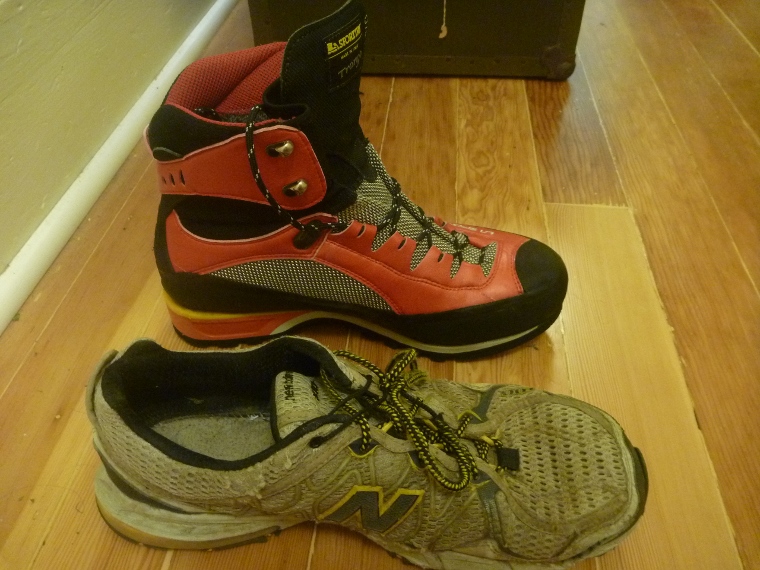 An interesting thing happens to your feet when you walk all day. They get bigger. Mine swelled from a regular 10.5 to quadruple-wide (4E) 12.5 within a month of starting the PCT. In all I probably went through 10 pairs of shoes, including a few pairs that I hated and tossed after a few days or a week.
An interesting thing happens to your feet when you walk all day. They get bigger. Mine swelled from a regular 10.5 to quadruple-wide (4E) 12.5 within a month of starting the PCT. In all I probably went through 10 pairs of shoes, including a few pairs that I hated and tossed after a few days or a week.
WARNING: this picture is what happens when you try to cram your giant feet into shoes two sizes too small and then walk on them for 10 hours. I went through a pair of shoes every week for awhile trying to find a pair that was big enough (not realizing my feet were growing fast). Eventually I settled on New Balance 810s. They were cheap, which seemed important as I was going through so many pairs. Once I had these, I was able to hike in them for ~400 miles before they fell apart. I then ordered a new pair online and had them shipped to wherever I was going to be next.
So, why am I using trail runners instead of sturdy hiking boots? There are a quite a few reasons:
- My pack is light, and my ankles strong. Do you wear hiking boots to support your book bag while walking to school? My pack is hardly heavier than that
- A lot of the trail is in desert, and the thought of being encased in leather up to my ankle is not appealing. I want my shoes to be light and airy
- In general, I’ve found that boots don’t keep my feet dry anyways, so might as well have a shoe that dries out fast
- Trail runners are light, and not having giant boots strapped to my feet makes walking less tiring. There’s an oft-repeated quote about shoes that goes something like “a pound on your foot is as heavy as 5 on your back”
- Trail runners have essentially the same tread as light hiking boots. Vibram soles are common in both
- You don’t have to break in trail runners. They are comfy right out of the box
Now, there are some downsides:
- Trail runners don’t have as sturdy soles. Most of the ones I choose don’t have a shank, so if you step on a pointy rock, you’re going to feel it
- Trail runners fall apart faster. 400 miles maximum means going through quite a few pairs over the course of a trail
- No ankle support. If you have ankle problems, trail runners likely aren’t going to work, although I have heard of people wearing ankle braces + trail runners instead of boots.
Thanks to the inspiration of the hospice palliative care movement and the efforts of countless individuals and groups, help for the dying and their loved ones is becoming more available. Symptoms can be relieved with low-cost interventions.
